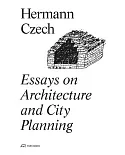There are two predominant approaches to the study of art nouveau architecture: some historians considering it to be the swan song of the great period styles, while others crediting the
architects of the art nouveau with planting the seeds of Modernism, while paying aesthetic lip service to the stylistic motifs of generative nature. Consistent among these disparate historical
accounts is the acceptance of an ideological rupture - the consensual certainty that art nouveau architecture represents either the end of the period styles, or the inception of Modernism. This
book examines this period through the lens of Belgian architect Victor Horta’s domestic interiors, and argues that the framing and conceptualization of the natural by Horta and his
contemporaries constitutes both a representational and experiential continuity, seamlessly eliding the apparently disparate interests of eclectic historicism and early Modernism. Domesticated
Natures examines the conditions that have contributed to this divided historiography of the art nouveau, and proposes that these attempts to interiorize and domesticate the natural world are
equally present in the aesthetic, scientific, historical and philosophical discourses of the late nineteenth-century. Therefore, this architectural movement signals, not a rupture, but rather a
developing understanding of the generative capacities of the natural world.





















